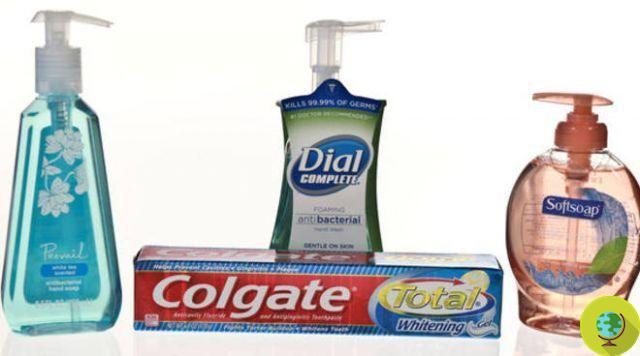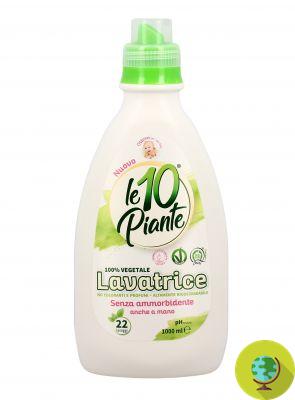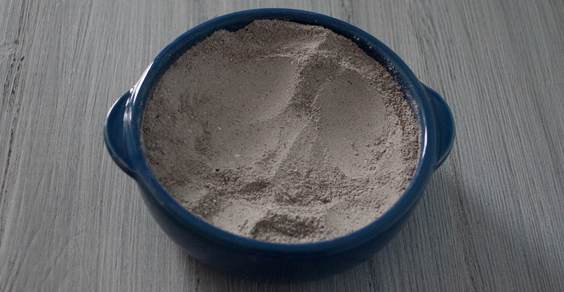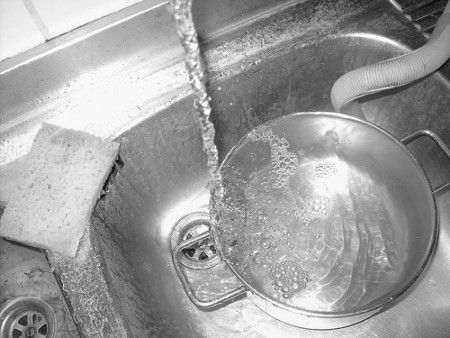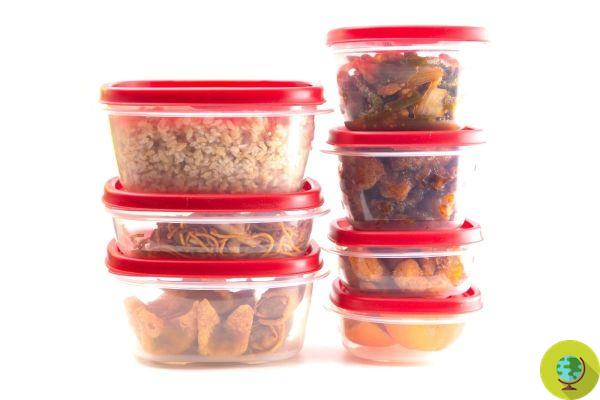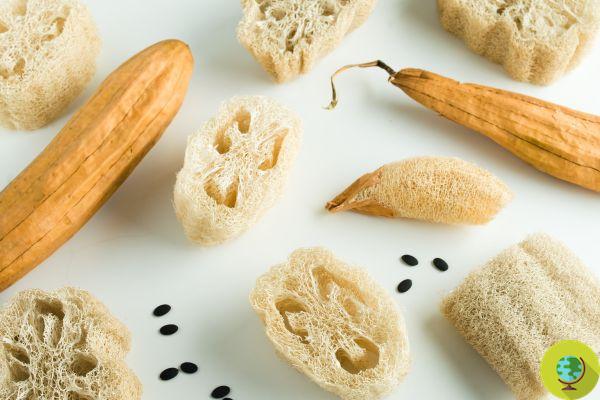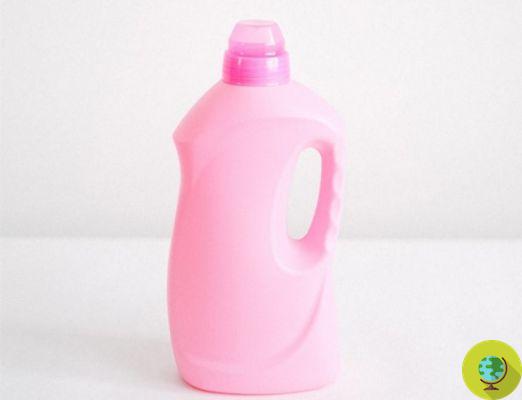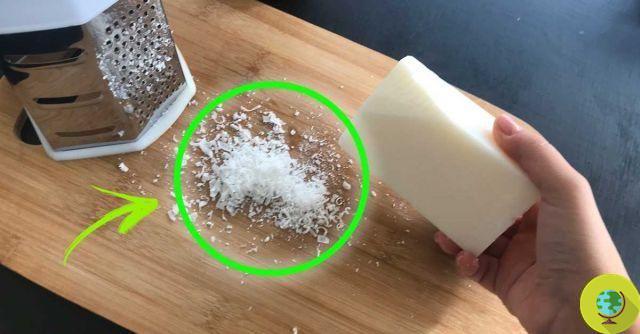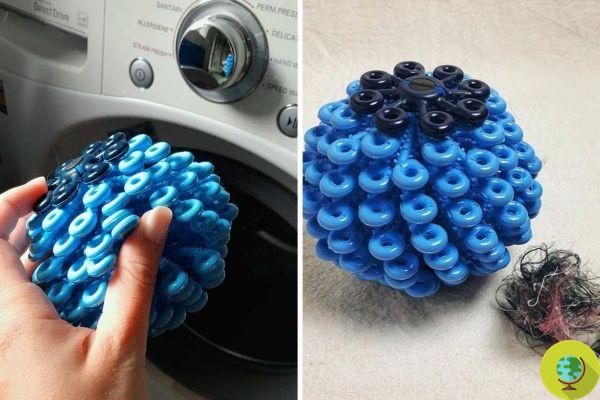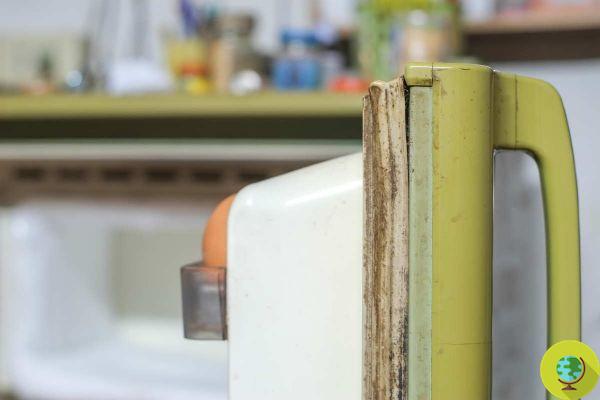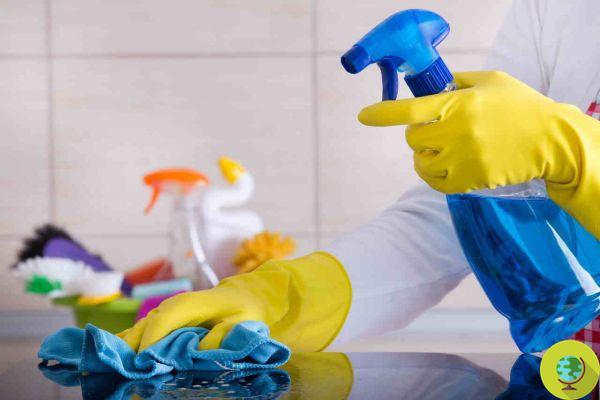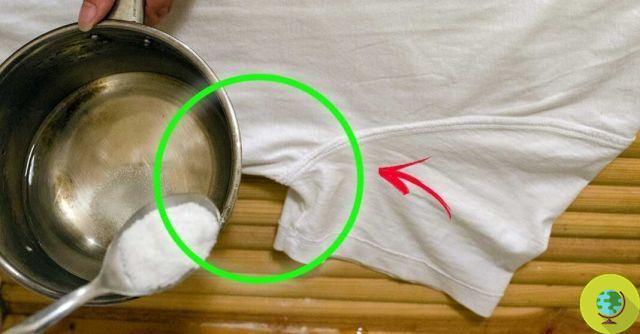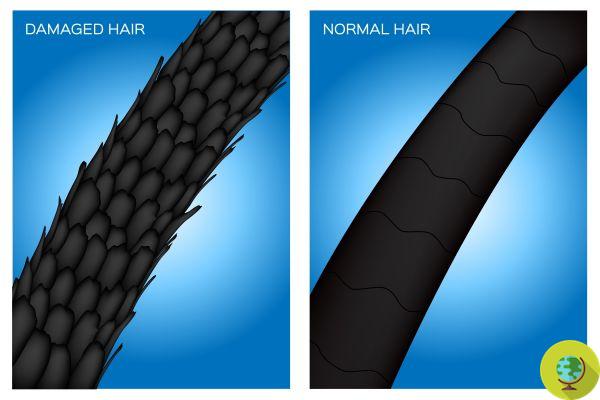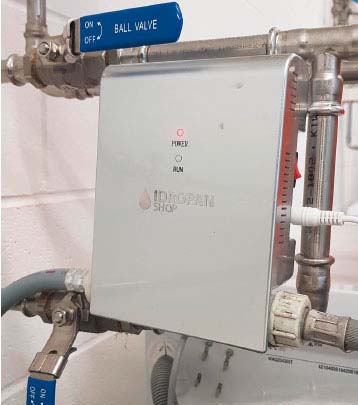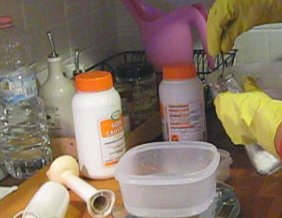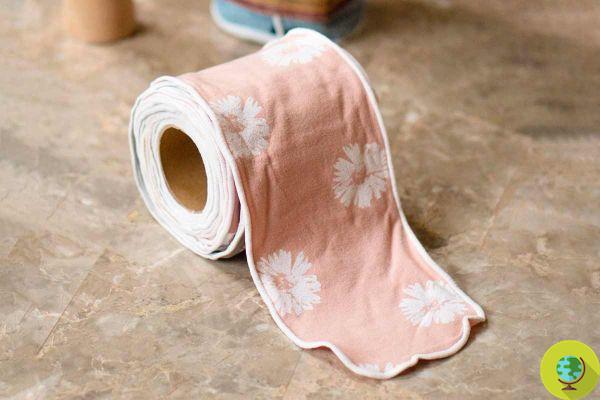
Have you ever heard of washable and reusable toilet paper? There are those who find it disgusting and those who, on the other hand, have been using it for a long time. We explain everything you need to know, from the tricks for its correct use to the possible side effects
He is about to end up run over, his mother saves him
If we think about it, the bathroom is perhaps the room in the house where we produce the most waste, most of which consist of non-recyclable plastic: diapers, sanitary towels, bottles of soaps and detergents, containers for make-up and perfumes and, more than everything, piles of toilet paper.
There are solutions to make our activities in the bathroom more sustainable and low-waste, and we often talk about them in our articles: for menstruation we can use washable pads or silicone cups; we can choose solid soaps and detergents in tablets that dissolve in water for showering or household cleaning. However, today we want to talk to you about a not too recent trend in the world of sustainability in the bathroom: the washable and reusable toilet paper.
(Read also: Menstruation: 6 alternatives to disposable pads, tampons and panty liners)
Index
How washable toilet paper works
These are essentially tiny, elongated towels, made of terry cloth, to be used after going to the bathroom in place of normal toilet paper. The basic concept is similar to that of nappies or washable pads that are on the market: they are used, they are all collected in a container, they are washed in the washing machine and are ready to be used again.
The web abounds with producers of washable toilet paper: they are mostly tailors or artisans who sell the product on portals dedicated to handmade (such as Etsy), but there are also some brands that have specialized in the production of reusable toilet paper and others corollary objects, such as waterproof bags for collecting dirty “tears” waiting to be washed.
@netzerocompanyUnpaper toilet cloths + bidet spray = super cool zero waste lifestyle! #bathroomroutine #unpapertowel #toiletpaper #ecofriendly #zerowaste #reusable
♬ Aesthetic Girl - Yusei
This paper aims to be an alternative solution to traditional cellulose paper, which contemplates the destruction of trees to be produced, the addition of chemicals to be bleached, the environmental costs associated with transport and packaging. But there are also those who find it disgusting or those who define it as "senseless", pointing the finger at washing and wasting water.
DIY Washable Toilet Paper
On Facebook groups and other social networks such as Tik Tok, there are many users who tell of how they made the washable toilet paper with DIY, from old towels or cotton sheets. Simply, they are cut out and obtained squares to use as small pieces. They can be finished with the overlocker, perhaps combining a cotton fabric to make them also cute. They are kept in a box next to the toilet and stored in a bin waiting to be washed in the washing machine.
Is washable toilet paper safe?
Indeed, one might wonder if this intimate cleansing system is safe and prevents the spread of germs and disease - especially if you are in a house with other people, with whom you share a bathroom and, consequently, also. toilet paper. The risk is not so much in the clean paper, available next to the toilet, but rather in the treatment and washing of the dirty one.
In fact, the coexistence of tears used by different people inside the same waterproof bag (or the same basket) favors the contamination and proliferation of bacteria, even dangerous for the health of all the inhabitants of the house. There are three moments to pay particular attention to:
- Storage of dirty paper. It is not necessary to divide the cloths according to the users. Instead, it would be advisable to provide a soaking period for the various cloths that make up our washable paper roll, so that the sanitation process begins. In this case we recommend warm water and mild soap. We do not recommend the use of vinegar, although many manufacturers of washable toilet paper mention it for its disinfectant properties: the molecules of acetic acid, contained in the vinegar, do not dissociate in contact with water and keep their properties unaltered. corrosive, irritating and inflammatory properties, threatening the survival of marine animals.
- Transfer to the washing machine. When we intend to start washing in the washing machine, we pay close attention to how we transfer our washable paper inside the drum. Let's wear gloves, so as not to come into direct contact with the dirt present on the fabrics, squeeze the various cloths from the soaking water and transfer everything to the washing machine without adding extra detergent - what we put in the drum will be enough. In the end, let's not forget to wash our hands: urine and feces contain a lot of bacteria which, if they remain on our fingers, can contaminate everything we touch.
- Washing. The washing phase is particularly important for our health, as it serves to break down any bacteria present on the washable wipes - in particular, the bacterium Escherichia coli: it is a bacterium present in our digestive tract (sometimes also in the urine). whose presence can cause serious stomach diseases. To be destroyed, the E. coli bacterium needs washing at high temperatures (not very ecological and particularly energy-intensive).
The disadvantages
First of all, there is the need to collect all these napkins that serve as toilet paper and wash them thoroughly - not unlike what happens when we wash sanitary pads or nappies. Not a small task, especially if there are many at home or if the weather conditions do not allow proper drying.
In addition to this, it is also necessary to arrange the various cloths up to reassemble what looks like a roll of traditional toilet paper, rolling the various layers on a cardboard core before returning the reassembled roll to the bathroom. Some wipes have snaps to allow you to attach them together and create a single large strip of rollable fabric.
Last but not least, there is the economic issue: if on the one hand the high cost of a pack of washable toilet paper can be amortized by the fact that we will no longer have to buy disposable toilet paper, on the other hand the costs associated with washing cloths (use of detergent, washing in the washing machine at high temperatures) still represent a significant expense on the household budget.
The advice of those who use it
What do those who have "converted" to washable toilet paper think? On the web, comments on the subject abound and on social networks there are also dedicated pages and groups, where users exchange advice on use, washing techniques and storage methods.
Many people prefer to limit their use to urine only, to prevent solid residues from irreparably staining the wipes.
@arosetintedworldHow to make family cloth #switchtoreusables #ditchthedisposables #zerowasteproduct #towelrecycle #sustainableproduct #sewingidea #upcyclingtowels
Ro Paro Paro G - DJ Sandy
Other people don't hesitate to use washable paper for stool or during menstruation, but they recommend keeping two separate containers next to the toilet - one to collect uric-soiled wipes, another for stool-soiled wipes.
Finally, many suggest the combined use of the bidet as a method to further sanitize the private parts before proceeding to drying with wipes - which at this point would perform a function not very different from that of simple towels, thus ending up getting very dirty. .
And what do you think?
Follow your Telegram | Instagram | Facebook | TikTok | Youtube
We also recommend:
- 10 excuses not to use washable nappies
- Contributions for the purchase of washable nappies arrive in Pordenone (Opens in a new browser tab)
- 10 reasons to use the menstrual cup




